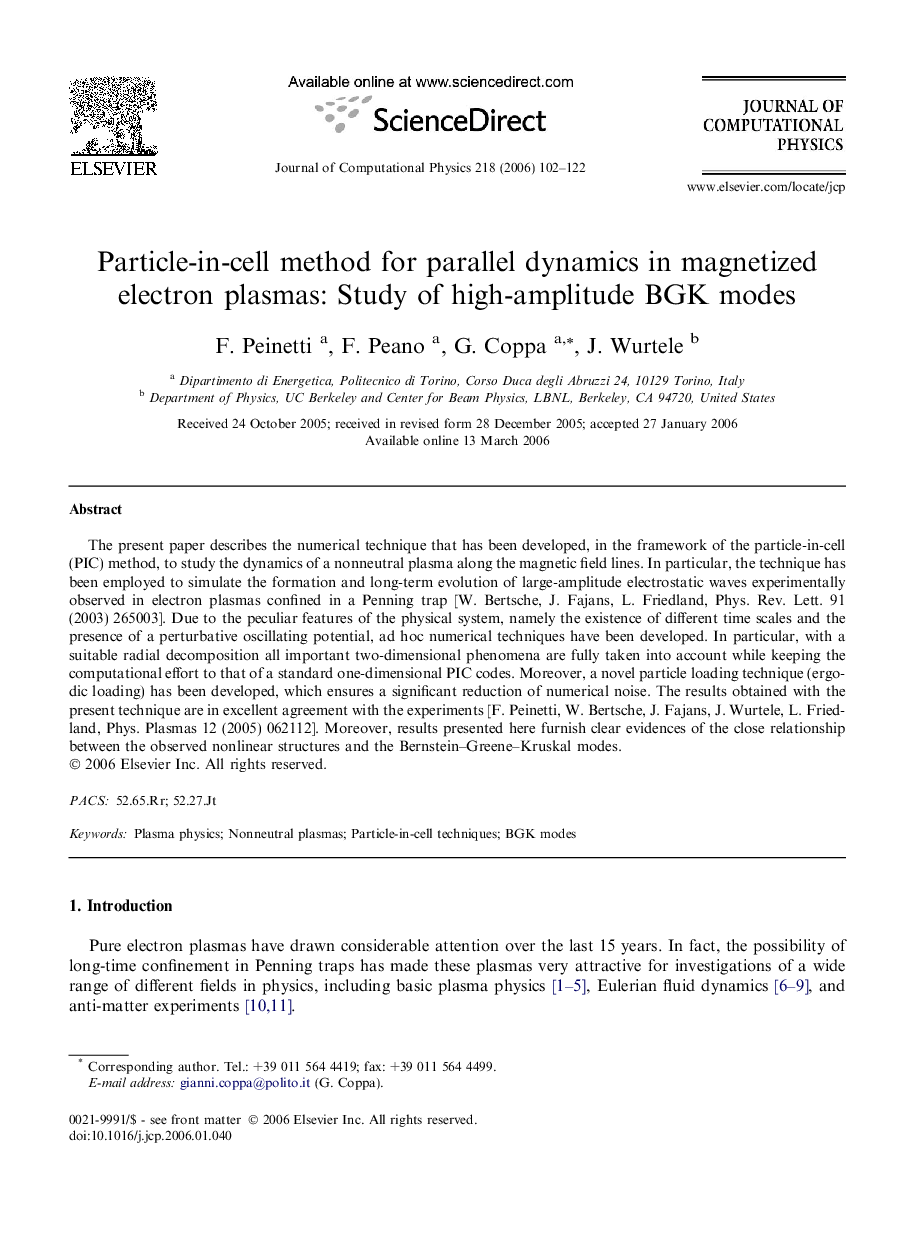| Article ID | Journal | Published Year | Pages | File Type |
|---|---|---|---|---|
| 522413 | Journal of Computational Physics | 2006 | 21 Pages |
The present paper describes the numerical technique that has been developed, in the framework of the particle-in-cell (PIC) method, to study the dynamics of a nonneutral plasma along the magnetic field lines. In particular, the technique has been employed to simulate the formation and long-term evolution of large-amplitude electrostatic waves experimentally observed in electron plasmas confined in a Penning trap [W. Bertsche, J. Fajans, L. Friedland, Phys. Rev. Lett. 91 (2003) 265003]. Due to the peculiar features of the physical system, namely the existence of different time scales and the presence of a perturbative oscillating potential, ad hoc numerical techniques have been developed. In particular, with a suitable radial decomposition all important two-dimensional phenomena are fully taken into account while keeping the computational effort to that of a standard one-dimensional PIC codes. Moreover, a novel particle loading technique (ergodic loading) has been developed, which ensures a significant reduction of numerical noise. The results obtained with the present technique are in excellent agreement with the experiments [F. Peinetti, W. Bertsche, J. Fajans, J. Wurtele, L. Friedland, Phys. Plasmas 12 (2005) 062112]. Moreover, results presented here furnish clear evidences of the close relationship between the observed nonlinear structures and the Bernstein–Greene–Kruskal modes.
